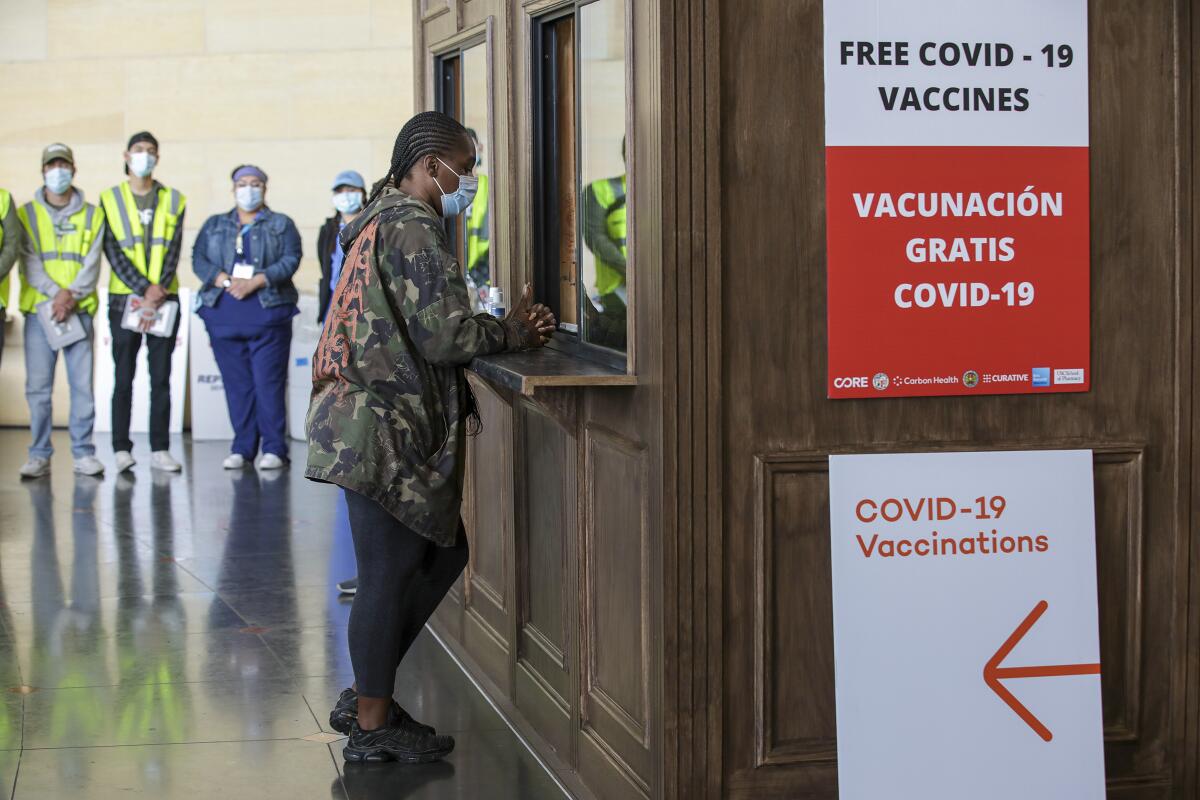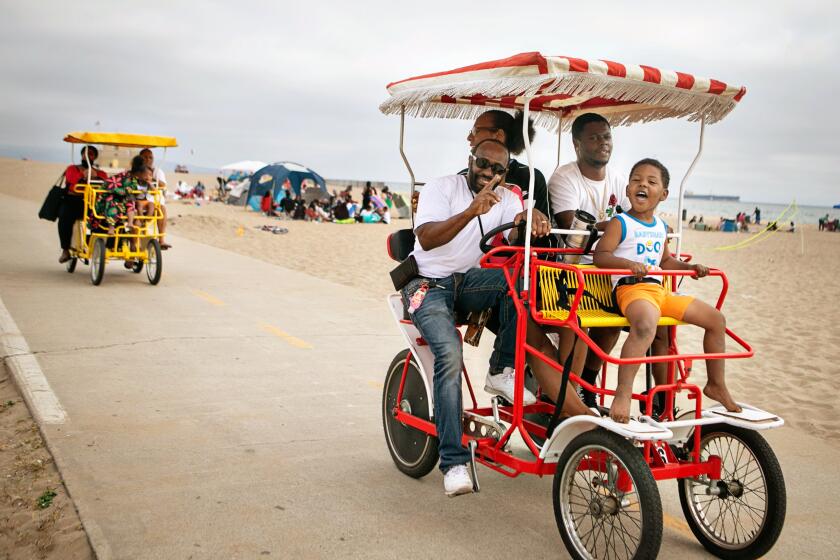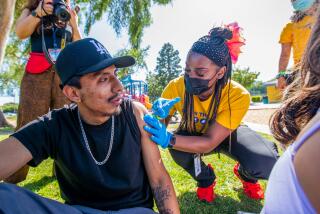3 in 5 Californians now at least partially vaccinated against COVID-19

Three in five Californians, or 60.5%, have now received at least one dose of COVID-19 vaccine, federal figures show — the latest milestone in the state’s rollout.
The picture is even rosier when looking at only those currently eligible to roll up their sleeves. More than 70% of residents 12 and older are partially vaccinated at this point, according to data from the U.S. Centers for Disease Control and Prevention.
The latest numbers, although improving, show the Golden State still has a ways to go in its vaccination efforts.
Fewer than half of all Californians (48.6%), and about 57% of those eligible to receive a shot, are fully inoculated — meaning millions more doses will need to be administered before the state reaches the level of vaccine coverage often cited as necessary to achieve long-lasting herd immunity against the coronavirus.
And although much of the state is enjoying some degree of protection, officials remain concerned about potential flare-ups among those who are unvaccinated.
Those worries are pressing given the spread of the Delta coronavirus variant, which may be twice as transmissible as the conventional strain.
California is contending with what could be the most contagious coronavirus variant to date, prompting officials to warn that residents face significant risk if they are not vaccinated.
“As I’ve often said, this virus is an opportunist. As long as there are those who are not vaccinated, COVID-19 will remain a threat,” Dr. Rochelle Walensky, director of the CDC, said this week.
Among all states, California, at 70.8%, ranks 11th in partial vaccination rates among the 12-and-older population, CDC data show.
Atop that leader board are Vermont, 83%; Hawaii, 80.7%; and Massachusetts, 79.7%.
California compares well with other sizable states. The rate is 71.9% in Pennsylvania, 68.8% in New York, 60.7% in Florida and 57.2% in Texas.
But the pace of new vaccinations — both in California and across the country — has slowed since peaking in mid-April.
Although that’s to be expected, as the pool of unvaccinated Americans has shrunk, hesitance about getting the shots has persisted.
Though it is impossible to say for sure, some suggest the state’s $116.5-million incentive program probably sparked renewed interest in getting a shot.
Officials say it’s important to understand that those who remain unvaccinated aren’t a homogeneous group, that there are numerous practical, as well as philosophical, issues that explain why they’ve yet to take their turn.
“This does not represent a whole host of ‘anti-vaxxers’ not coming in to get vaccinated because they spent their whole lives fighting against vaccinations,” L.A. County Public Health Director Barbara Ferrer said. “This has to do with issues related to access and to confidence in these particular vaccines.”
During a panel discussion sponsored by the USC COVID-19 Pandemic Research Center on Wednesday, Ferrer said that there are real hurdles keeping Angelenos from getting vaccinated and that it remains vital to make sure plenty of convenient options are available.
“We’re at community events; we’re at houses of worship; we’re at transit stations; we’re at parks; we’re at shopping centers,” she said. “We go where people ask us to go. We go to work sites. We’ll go and set up a pop-up and vaccinate 10 people, and we’re good with that.”
But, she continued, health officials are trying to reach holdouts by taking the time to address their concerns and build confidence in the vaccines.
“We think there’s lots of evidence about their safety,” she said, “particularly now that hundreds of millions of people have been vaccinated, but we do have to answer people’s questions.”
The Delta variant, the fourth most-often identified variant in California, may be twice as transmissible as the conventional strain. Unvaccinated people are most at risk.
One particular cohort that has lagged behind in vaccination rates is younger adults.
According to data compiled by The Times, about 62% of Californians ages 18 to 49 are at least partially vaccinated, compared with 78% of those who are 50 to 64 years old and about 89% of those 65 and older.
Only about 41% of 12- to 17-year-olds have received at least one dose.
Jeff Zients, coordinator of President Biden’s COVID-19 task force, stressed this week that it was essential to get those ages 18 to 26 vaccinated.
“The reality is many younger Americans have felt like COVID-19 is not something that impacts them, and they’ve been less eager to get the shot,” he said during a briefing Tuesday. “However, with the Delta variant now spreading across the country and infecting younger people worldwide, it’s more important than ever that they get vaccinated.”
If scientists discover that immunity to the coronavirus starts to wane months or years after vaccination, a booster shot could be deployed.
Even if someone who’s infected suffers mild symptoms — or none at all — officials note that every new case gives the coronavirus additional chances to mutate, potentially spawning more dangerous variants.
“We are not done until we completely crush this outbreak,” said Dr. Anthony Fauci, the U.S. government’s top expert in infectious diseases.
More to Read
Start your day right
Sign up for Essential California for news, features and recommendations from the L.A. Times and beyond in your inbox six days a week.
You may occasionally receive promotional content from the Los Angeles Times.












